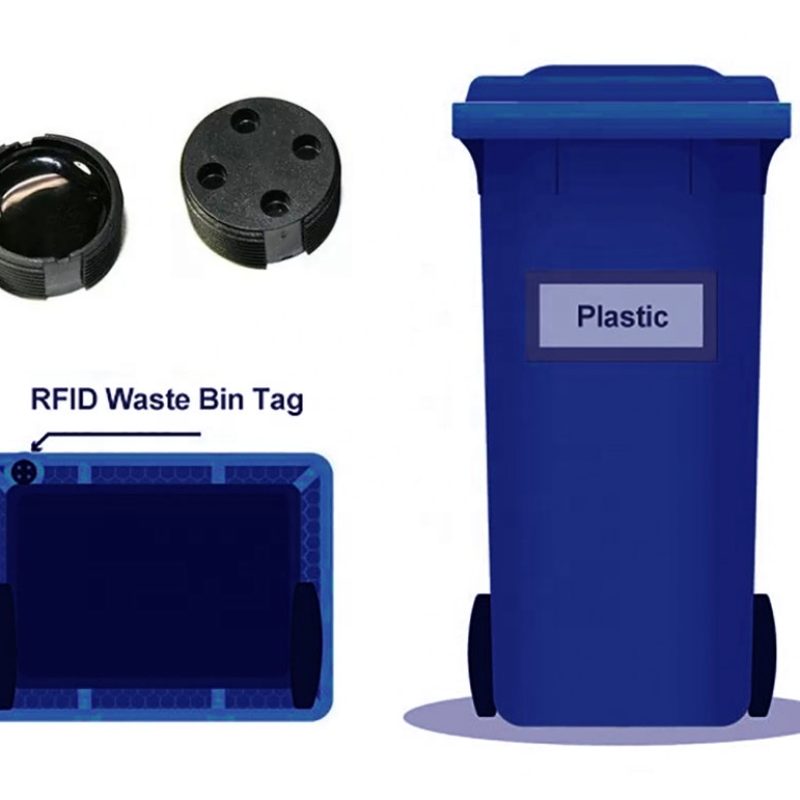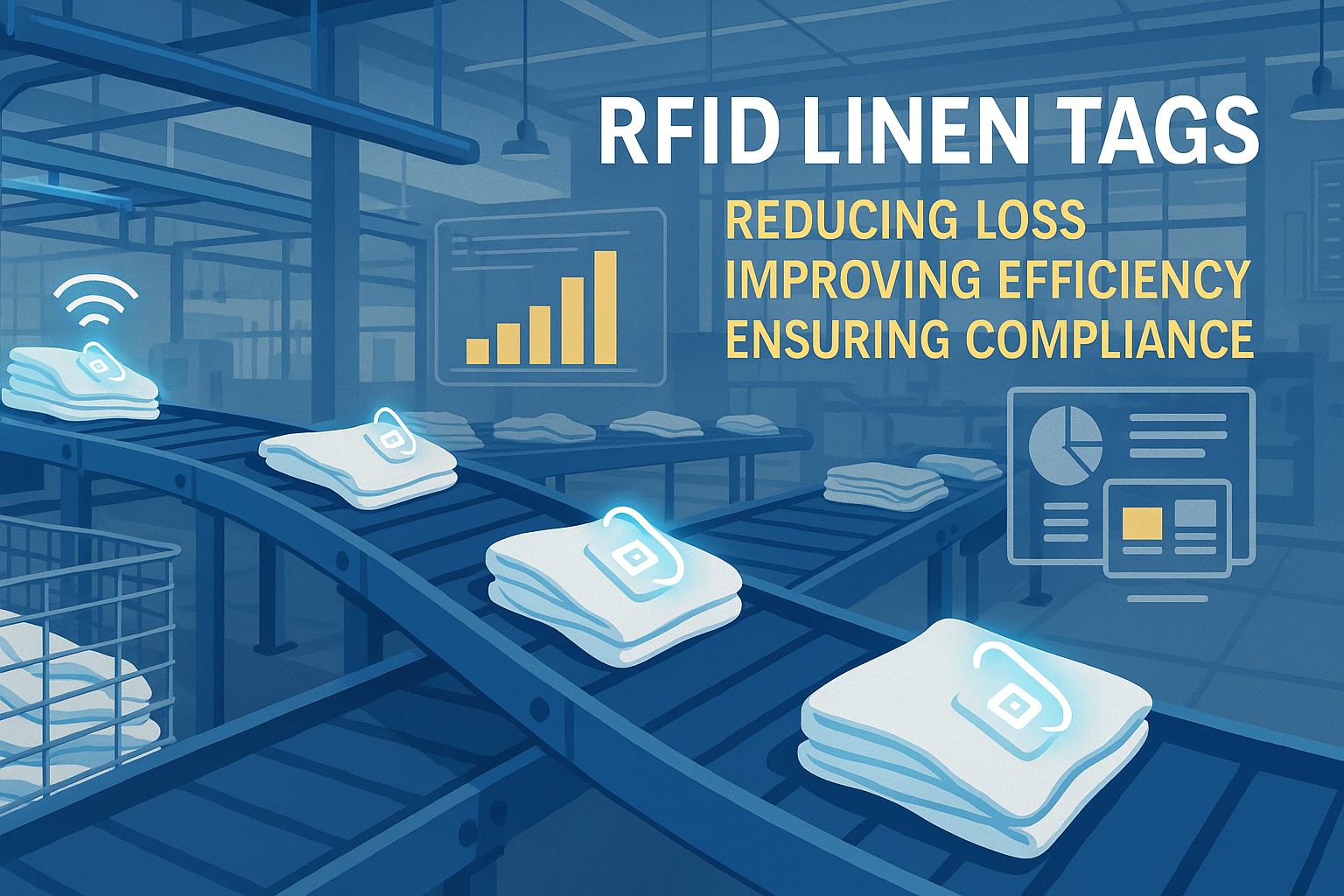
What Is RFID Waste Management
Table of Contents
Introduction to RFID Waste Management
“RFID,” short for Radio-Frequency Identification, is a technology that uses radio waves to identify and track items automatically. When applied to waste systems, it allows cities and companies to track the full journey of trash — from collection to transport and disposal. It’s one of the most promising innovations in smart city infrastructure, helping make waste collection more efficient, transparent, and environmentally responsible.
What Is RFID Waste Management?
RFID waste management involves embedding small RFID tags on waste bins, bags, or carts. These tags are scanned by RFID readers installed on collection trucks or at sorting facilities. Each scan records data like time, location, bin ID, and even weight.
It’s like giving every bin a digital ID card. When the truck passes, the system knows exactly which bin was serviced, when, and by which vehicle. This enables complete traceability and automation of the collection process.
For example, cities and private operators are now using RFID bin tags on household waste containers to verify pickups, reduce missed collections, and automate billing.

How RFID Waste Management Systems Work
Every RFID waste management system includes three main components:
- RFID Tags: Small electronic chips placed on waste bins or containers.
- RFID Readers: Devices mounted on garbage trucks or at collection points that scan the tags.
- Backend Software: A management platform that collects and analyzes the data.
When a truck passes by, the reader detects nearby tags and logs each bin’s data — location, time, and pickup confirmation. This information is sent to a database where operators can view dashboards, performance metrics, and route histories.
More advanced systems integrate RFID waste bin tags with sensors that measure fill levels or weight. Combined with GPS and route optimization software, RFID helps cities streamline waste collection with precision.
Benefits & Use-Cases of RFID in Waste Management
Here’s why cities and companies are adopting RFID waste management:
- Route optimization: Trucks skip empty bins, saving fuel and time.
- Accurate billing: Supports pay-as-you-throw programs where residents are charged based on actual waste volume.
- Better accountability: Each bin service is logged, reducing complaints and missed collections.
- Enhanced recycling: RFID data helps identify waste types for improved sorting and recycling rates.
Examples include municipalities using RFID bin tags to confirm service completion, and industrial facilities using RFID for hazardous waste tracking — ensuring regulatory compliance and traceability.
Real-World Examples & Case Studies
Cities around the world are already using RFID waste management to modernize their systems — and the results are measurable.
Amsterdam
Amsterdam installed RFID tags on all household bins. The outcomes were clear:
- 15% fewer missed collections
- Streamlined collection routes using real-time data
- Significant reductions in fuel consumption and driver hours
Seoul
Seoul’s pay-per-use food waste program uses RFID waste bin tags to track disposal. Residents tap an RFID card at smart bins; the system weighs the waste and charges accordingly. Some districts reported over 30% reduction in food waste thanks to this system.
Private Haulers
Private waste management companies also use RFID waste management technology to:
- Track commercial pickups in real time
- Automate billing
- Identify service issues before customers even notice
RFID vs Barcode Waste Bin Tracking
While both RFID and barcodes are used to track waste bins, the technologies differ significantly in performance, automation, and durability. The table below compares the two approaches in key areas relevant to modern waste operations.
| Feature | RFID Waste Bin Tracking | Barcode Waste Bin Tracking |
|---|---|---|
| Scanning Method | Uses radio waves; no line-of-sight required. Readers can detect tags automatically from several meters away. | Requires direct line-of-sight. Workers must manually scan each label. |
| Speed & Efficiency | High — multiple bins can be scanned at once, even while the truck is moving. | Low — only one bin can be scanned at a time, slowing down collection. |
| Durability | RFID bin tags are resistant to dirt, moisture, and damage. | Barcodes easily fade or get covered by dirt and scratches. |
| Data Capacity | Can store detailed data such as bin ID, owner, weight, and history. | Limited to a simple numeric or alphanumeric code. |
| Automation Potential | Fully automated — integrates with IoT sensors, GPS, and route optimization. | Manual — relies on human operators for scanning and recording. |
| Initial Cost | Higher upfront (tags and readers), but long-term ROI through automation. | Low upfront, but higher ongoing labor costs and errors. |
| Best For | Smart cities, industrial facilities, and private haulers aiming for automation. | Small operations or low-budget systems needing basic identification. |
In summary, RFID waste management offers a scalable, automated solution, whereas barcode tracking remains a low-cost, entry-level option. For cities and organizations seeking long-term efficiency, RFID waste bin tags are the smarter investment.
RFID Waste Management in Industrial Waste Streams
RFID waste management is also transforming industrial waste tracking. In sectors like manufacturing, construction, and healthcare, regulatory compliance and traceability are non-negotiable.
Using RFID waste bin tags, companies can record every movement of waste containers — from generation to transport and final disposal. The tags capture timestamps, handlers, and routes, ensuring complete chain-of-custody visibility.
Hospitals, for example, use RFID to track biohazard containers; automotive plants use it to monitor scrap metal and chemical waste. The data not only improves compliance but also identifies inefficiencies in material flow and disposal processes.
For industries facing strict audits or sustainability reporting, RFID waste management delivers reliable, tamper-proof documentation and real-time operational insights.
Can RFID Waste Management Reduce Collection Costs?
Absolutely. The automation built into RFID waste management translates directly into cost savings.
With real-time visibility into which bins are full, trucks can skip unnecessary stops — cutting fuel consumption, labor hours, and vehicle wear. Cities like Amsterdam reported significant reductions in missed pickups and operational inefficiencies after deploying RFID waste bin tags.
Private haulers benefit as well: automated pickup verification minimizes disputes and paperwork, while route optimization software reduces total mileage. Over time, the data collected enables smarter planning — adjusting collection frequency and bin placement for maximum efficiency.
While the initial investment in RFID hardware is higher than barcodes, most operators achieve ROI within one to three years through savings in logistics, fuel, and administration.
Challenges, Pitfalls & Considerations
Even the best RFID waste management system has hurdles:
- Cost: Upfront spending on tags, readers, and integration.
- Technical factors: Read range can be affected by bin materials or environmental conditions.
- Data privacy: Linking bin IDs to households requires careful data protection.
- Sustainability: RFID chips contain electronics that must be recycled responsibly.
- Training: Workers and IT teams need orientation for the new system.
Running a pilot first is the best way to fine-tune hardware and data handling before scaling up.
Steps to Implement RFID Waste Management
Here’s a clear roadmap for municipalities or companies exploring RFID waste management:
- Define objectives: e.g., reduce missed pickups by 20%, improve recycling by 15%.
- Audit current systems: Identify bin types, routes, and digital tools already in use.
- Select hardware & software: Choose passive or active RFID bin tags and compatible readers.
- Run a pilot: Test in one district or facility.
- Scale up: Expand coverage and integrate with billing and analytics.
- Monitor & optimize: Continuously use RFID data to refine operations.
Early engagement with workers, residents, and stakeholders ensures smoother adoption and clearer communication.
Future Trends & What’s Next
The future of RFID waste management lies in deeper integration with smart technologies:
- IoT Sensors: Combine RFID with level or weight sensors for real-time monitoring.
- AI & Analytics: Predict routes and detect anomalies automatically.
- Circular Economy Tracking: Follow materials from collection to recycling.
- Eco-friendly tags: Development of recyclable or biodegradable RFID bin tags.
- Global adoption: Emerging markets integrating RFID into smart city initiatives.
People Also Ask (FAQs)
Why are cities switching from barcode to RFID waste management?
Because RFID eliminates manual scanning. It allows automatic bin detection, real-time tracking, and integration with route optimization software — features that barcodes simply can’t offer.
Do RFID bin tags work on all types of waste containers?
Yes. RFID bin tags come in different materials (nylon, ABS, epoxy) and are designed to withstand heat, rain, and mechanical stress. Specialized models also exist for metal or underground bins.
Can RFID and barcodes be used together?
They can — some hybrid systems use barcodes for backup or visual reference while RFID handles the main data capture. However, most modern RFID waste management solutions rely fully on RFID for speed and automation.
Are RFID waste bin tags expensive?
Individual tags are relatively low-cost. The main investment lies in readers and system integration — but operational savings from reduced labor and fuel quickly offset these costs.
Is RFID data secure?
Yes. Modern RFID systems use encrypted communication between tags and readers, ensuring that sensitive collection or billing data remains protected.
Conclusion
RFID waste management is reshaping how we collect and monitor waste — making it smarter, cleaner, and more accountable.
By combining RFID waste bin tags, readers, and analytics, cities and companies can reduce costs, improve service reliability, and strengthen sustainability goals. It’s not just about tagging bins; it’s about creating a connected, efficient ecosystem for the waste industry.
If your organization wants to cut collection costs, meet compliance requirements, or move toward data-driven operations, start with a small RFID pilot and measure the impact — one bin, one route, one city at a time.

Ray Zhou
This article was written by Ray Zhou, an RFID technology expert with more than 10 years of industry experience.
Comments
Hot Products

What Is RFID Waste Management
Imagine a city where every trash bin speaks — not literally — but through a tiny chip that tells the system when it’s full, when it’s emptied, and where it went. That’s what RFID waste management is doing today.

What are Bolt Seals and their Applications? | Complete Guide
In global trade and logistics, bolt seals play a crucial role in ensuring cargo security and compliance. These small but powerful devices are designed to lock shipping containers, trailers, and cargo doors with a tamper-evident mechanism.

What is an RFID Card Protector? Benefits, Use Cases, and Buying Guide
RFID technology (Radio Frequency Identification) is everywhere: in your credit cards, ID badges, transit passes, hotel room keys, and more. It offers speed and convenience, but it also opens the door to a new kind of digital theft called “skimming.” That’s where an RFID card protector comes in.

RFID Wristbands for Events: Bulk Buying Guide for Organizers
RFID wristbands for events are becoming the go-to solution for organizers who need faster entry, fraud prevention, and cashless payments at concerts, festivals, and sports venues. Unlike paper tickets or QR codes, these smart wristbands use embedded chips to streamline access, secure transactions, and improve the guest experience.

How RFID Tag on Windscreen Improves Vehicle Access Control and Toll Systems
In today’s fast-paced world, vehicle identification needs to be quick, secure, and contactless. An RFID Tag on the Windscreen provides exactly that — a reliable way to manage toll collection, parking, and gated access without stopping vehicles.

The Benefits of RFID Linen Tags in Commercial Laundry
Managing laundry in hospitals, hotels, or large laundry services is a big job. Each day, thousands of sheets, towels, and uniforms are washed, sorted, and sent back out. But problems like lost linens, sorting mistakes, and manual counting can cost companies a lot of money. For example, mid-sized hotels can lose over $200,000 each year from missing linens.
That’s where RFID Linen Tags come in.




